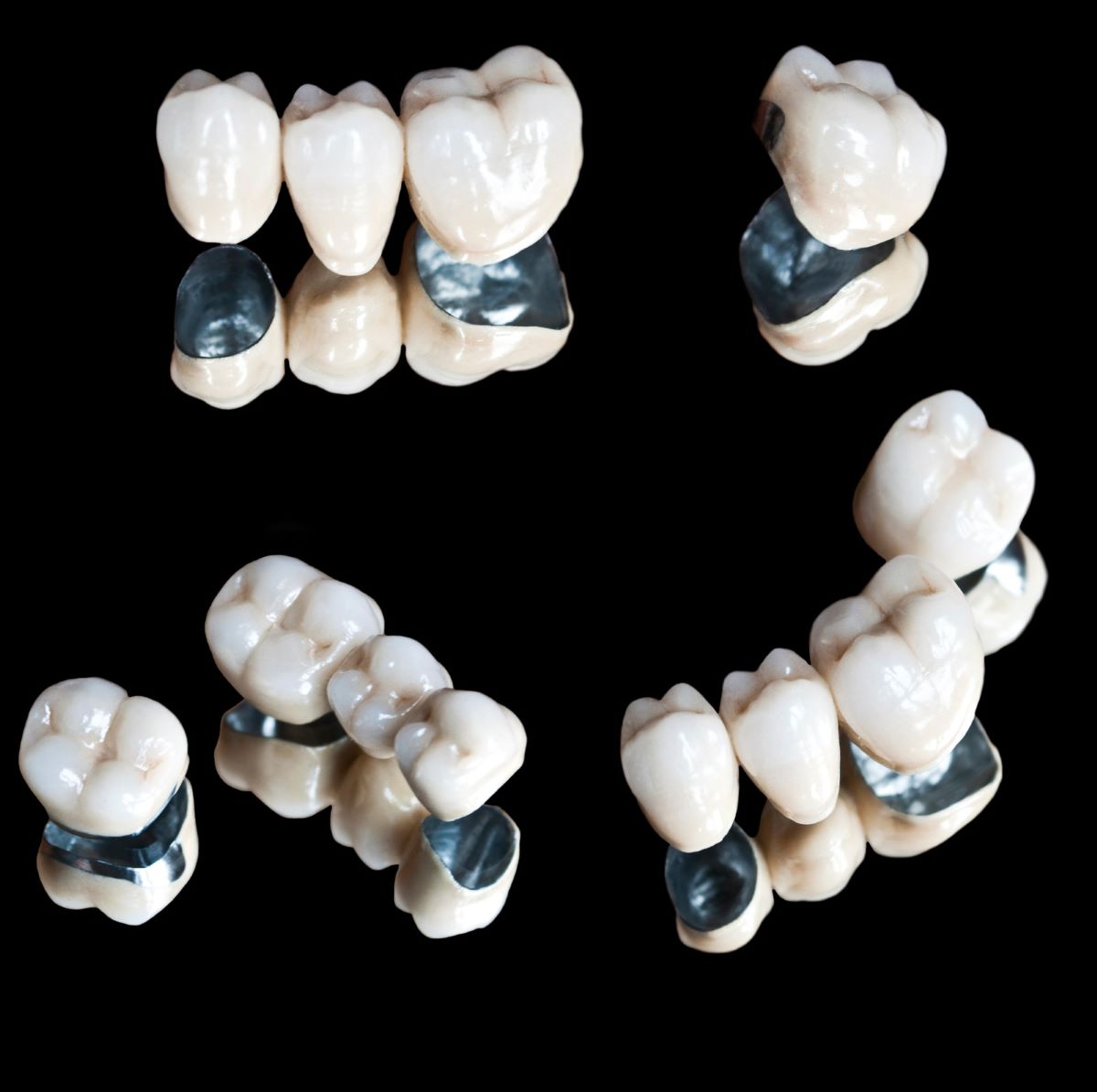For crown surgery, it is important to understand that it is very simple and only requires one or two appointments, depending on the type of crown you get. The dentist will prepare your teeth, file them to create space around them for the crown, and make molds of your teeth. The dental laboratory will use this mold to create your custom crown. In one to two weeks, your crown will be ready for fitting and installation.
Let’s continue with this step-by-step guide if you want to learn everything about dental crown surgery.
1. What is a Crown Procedure?
Dental crowns are one of the most desired and desired dental solutions. The procedure is almost routine for dentists, it is simple and only requires one or two dental appointments. During the first visit, the dentist will assess the situation and file the tooth. When the prepared tooth is ready, the dentist will make a mold for the laboratory. During the second visit, the fitting and installation of the newly created crown will take place. If you choose a one-day crown, you only need to make one appointment.
Two things are worth noting: First, you may need root canal treatment before getting a crown. Second, you’ll get temporary crowns between surgeries as a preventive solution so your teeth aren’t exposed. After the replacement, since the tooth has been filed, the doctor will simply remove the mold and begin the dental procedure.

2. Classic crown surgery
Tell me about the process. The dental crown process is very simple. Get a dental crown and a new beautiful smile in just two appointments. During your first appointment, you will notice that the doctor prepares your teeth and evaluates the situation. After the mold is complete, you will be sent home with the temporary crown. At your second appointment, your dentist will put a permanent crown on your tooth. Finally, you can enjoy your new smile. The procedure is painless as the dentist will administer a local anesthetic before beginning the procedure. The entire process takes one to three weeks, depending on the clinic and dental laboratory.
1) First visit
- Talk: At the beginning of your visit, you will discuss your needs, goals, habits, medical history, expectations for end results, and dental concerns with your dentist. Physicians need a comprehensive understanding of a patient’s medical, dental, and life history. This is the time to disclose illnesses, allergies (to avoid allergic reactions), habits (smoking, chewing on hard objects), and bruxism (teeth grinding). You can discuss the type of crown that is more suitable for you.
- Assessment: Now is the time for your dentist to examine your teeth, gums, and overall dental health. A dentist examines the patient’s mouth, teeth, gums, and overall dental health. Your dentist will make sure no other procedures are needed and there is no extensive decay. If there are no problems, the dentist will begin preparing the tooth for the crown.
- Plastic surgery: The dentist will inject a local anesthetic and wait. Once the area is numb, the procedure can begin. A dentist files away one or more teeth to reshape them. Your teeth will be much smaller to make room for the crown and cement. Teeth are filed on top and sides. The procedure is not painful because local anesthesia numbs you.
- Molds: After the tooth is filed, the doctor will use the impression tray to make a mold of the tooth and adjacent teeth. This mold enables the lab to custom-create a perfectly matching crown for you. The impression tray then immediately goes into the laboratory to start the fabrication process. The color of the crown will be discussed between the patient and the dentist. It has to be the exact color of the teeth around it. Doctors have a shade guide to choose from. This allows for a natural look and crowns that look like natural teeth. The selection should be a perfect match for the patient’s teeth. There shouldn’t be any mismatch, or the crown will look unnatural.
- Temporary Crown: The dentist will then apply the temporary crown. The crowns will cover the vacant area and protect the reshaped tooth. Once the permanent crowns are ready, you throw away the temporary crowns because they won’t last.
- The first part is done! : The first part of the dentist visit and crown surgery is now over. Dentists give advice and advice to patients on how to manage some of the discomforts after crown surgery. In addition, your dentist will provide some advice on how to care for your temporary crown.
There may be some side effects, but this is an easy recovery process. Pay special attention to your temporary crown and your oral health, so avoid hard food, cold food, and hot food, don’t chew hard objects, and follow your doctor’s advice about dental care.
2) Second visit
How does the crown installation process work? After the crown has been made, the patient returns to the dentist’s office for installation. Let’s take a look at the second part of the next crown procedure:
- Fit: After the crown preparation is complete, the dentist will check the crown. They need to be a perfect match in terms of color and shape. They will be returned if they are not perfect. If they work best for you, then it’s time to install them. First, the dentist removes the temporary crown.
- Disinfection: The dentist will thoroughly disinfect the area to prevent bacteria from adhering under the crown and causing tooth decay, cavities, damaged teeth, or cavities. This is an essential step. Dentists use special solutions with antiseptics formulated for natural teeth and gums.
- Installation: Dental cement acts as an adhesive between the natural tooth and the permanent crown. A special beam of light, a type of ultraviolet light, dries cement extremely quickly. In this way, the crown will remain cemented, firmly attached to the tooth. Dentists should pay special attention to this part to avoid incorrect connections or excessive cement.
- Smile Conversion: Congratulations, you’re done! The crown procedure is over and you can go home after speaking with the dentist. Your dentist will explain how to care for your new crown.
Now is the time to take care of your crowns, maintain good oral hygiene, and have regular follow-up visits with your dentist throughout the year. The recovery period will only last 2-3 days. The recovery period involves some discomfort and mild pain. Some over-the-counter pain relievers may help.
3. Crown surgery time
We explain crown surgery and all its steps. But how many steps does it take to get the crown from start to finish? Well, to answer this question, we need to explain a few things first.
Answers vary because crown surgery takes anywhere from 1 week to 4 weeks. It depends on the dental laboratory that made the crown. If the clinic has an external lab, the time will be longer because the lab has to handle multiple clients and multiple clinics. With an in-house lab, your crown will be ready in a week or less. This is because the lab only needs to process one clinic’s request.
At Dentfix, we have our own dental laboratory within our practice. This means your entire process will take 7 days and that’s it. The team will begin working on your impression tray once it is ready. We value your time and would never ask you to wait weeks for your crown.

4. Same-day crown surgery
Same-day crown surgery takes just one day, with just one appointment at your dentist’s office. To take images of the teeth, an intraoral camera is used instead of a mold. This camera will help create a 3D image of the tooth that needs a crown. CEREC uses this 3D image to create an accurate impression. A CEREC machine will create your crown immediately, with no waiting days or weeks.
So, how does the visit work during the program of the day?
You will go to the clinic and visit your dentist. They will analyze your situation and check for any conditions, such as cavities or cavities. If all is well, the process can begin. After the tooth has been reshaped, the 3D camera sends a 3D image to the CEREC machine. You will wait while the machine creates your crown. This takes one to two hours. After the crown is complete, the doctor will begin to disinfect and use dental cement to secure the crown to your tooth. Once the crown is glued on, you’re ready to go with a big smile on your face!
Typically, the entire process takes 2 to 4 hours. Timing may vary depending on the number of crowns required.
5. Replacement procedure
So what to do if you need a crown replaced? What is the procedure for such a program?
The crown replacement procedure proceeded exactly as normal. The dentist will loosen your previous crown and remove it – unless it has fallen off or broken off. No shaping will be done to the teeth as they have been shaped before. Your tooth will also be molded and sent to the lab for analysis. For crowns on the same day, a 3D scan will be performed. If the crown is not worn that day, the patient will wear a temporary crown and go home. When the crown is ready, the installation process will begin. Disinfect, cement, and attach. You can now enjoy your Corona.
6. What happens after pediatric crown surgery for Children?
Crown surgery for children follows the exact same steps as for adults. There are no changes to the program. Thus, it includes visits, tooth shaping, crown fabrication, tooth and gum cleaning, and crown bonding. There is no difference at all. The procedure may take more time because children need more rest than adults.
After surgery, your child should refrain from eating until the numbness is gone. This is very important to avoid injuring your cheek or lip. Your child may be unwell for 24 hours after crown surgery. You can discuss some children’s pain relievers, such as ibuprofen, with his dentist or pediatrician. The healing process is quick and parents need not worry. If the pain does not stop after 24 hours or does not improve with pain medication, contact your doctor right away.

7. Frequently Asked Questions About the Program
Patients interested in dental crown surgery frequently ask our translation team and customer service agents what questions to expect. So here are some:
1) What should be paid attention to in dental crown surgery?
You don’t have to worry about crown surgery. Most of our patients feel nothing during the procedure and experience some discomfort for the next few days. There is no painful and traumatic experience, so no worries. You should ask how to care for crowns and temporary crowns after installation.
2) Is the dental crown procedure painful?
Usually, no. During the procedure, local anesthesia may be administered. After that, most patients talk about the discomfort of the adaptation period and rarely talk about pain. There is always the possibility of taking pain medication.
3) Can a dental crown be done on the same day?
Yes, thanks to CAM/CAD technology it is possible to crown on the same day. The entire procedure lasts 3-4 hours and only requires an appointment with a dentist. You will go home with your permanent veneers the same day.
4) How is the crown prepared?
You do not need to do any preparation for crown surgery. Just follow any advice your dentist gives you. The dentist will take x-rays and, depending on your condition, a root canal may be needed.
5) Can you wear a crown without a root canal?
Yes, you can absolutely have crown surgery without a root canal. These are two different dental solutions. Root canal surgery is only necessary if there is decay, extreme inflammation, or infection. If there is no decay, you do not need root canal treatment. Your oral care provider will tell you if it is needed before the procedure.





Leave A Comment